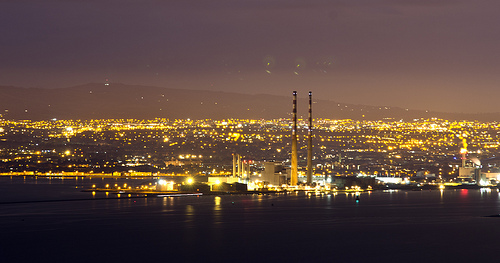The 2020 emissions projections: a deep dive

29 January 2021
The Environmental Protection Agency (EPA) and the Sustainable Energy Authority of Ireland (SEAI) released their early estimates for 2020 greenhouse gas emissions today – and there is a lot to unpack in it.
So we did a fine-tooth comb of the report this morning, and also revisited 2019 emission projections to see what has changed, and by how much.
Here we go.
Emissions declined by 6 per cent.
Overall, 2020 saw an emissions drop of 6 per cent compared to 2019. That reduction is comparable to what we saw in the aftermath of the 2008 financial crisis, where emissions fell by 8.4 per cent in 2009.
This decline is the biggest we’ve seen since 2011, and the drop is predominantly due to the impact of COVID-19.
However, it’s still not enough.
Even with this decline, the report projects that we will miss our energy and climate targets for 2020.
To meet last year’s goal, we needed to see a 20 per cent decrease in emissions when compared to 2005 levels.
Our 2020 emissions are anticipated to come in at just 12 per cent below that benchmark, a full 8 per cent off the target.
The EPA warned that this would probably be the case back in November, saying it would be “highly unlikely” that Ireland would meet its targets.
Transport saw the biggest fall.
Transport emissions plummeted by 17 per cent in 2020, which is not a surprise given the ongoing COVID-19 restrictions.
And while transport is traditionally a sector whose activity and greenhouse gas emissions are most responsive to changes in economic activity, the impact of the pandemic was far greater than even the largest fall of 9 per cent in the sector’s emissions seen during the late 2000s financial crisis.
We also saw a considerable reduction in air pollution, particularly in urban areas, due to the reduced levels of vehicle travel.
It’s important to note that international aviation emissions are not included in this 17 per cent drop, but the report did observe that jet fuel consumption levels plunged by 80 per cent compared to 2018 and 2019 levels.
Power generation made climate gains.
Our energy sector emissions dropped by 14 per cent compared to 2019, and were in fact 28 per cent lower compared to what was originally projected for 2020 pre-COVID-19.
This estimated drop cannot be directly attributed to the impact of the pandemic, according to the EPA and SEAI, but is rather due to a trend of declining use of coal and peat-produced electricity.
About 40 per cent of our electricity is projected to have come from renewable sources last year, and the report cites renewable wind and increased interconnections as key drivers for the figure.
Residential emissions rose.
Given the amount of people working from home over the course of 2020, it would make sense to anticipate an increase in residential emissions. Which in fact we did see, as emissions from our homes increased by 9 per cent.
2020 also saw low prices for home heating fuel, particularly in the early part of the year, which might also be a factor here.
This increase could also lead to a greater exposure to bad air quality, particularly in areas where levels of solid fuel burning are high.
Emissions from agriculture remain relatively the same.
According to the latest available data, the EPA and SEAI estimate that emissions from agriculture will increase slightly, up by 0.4 per cent compared to 2019.
The report attributes this to increases in fuel and nitrogen fertiliser use.
Provisional data also shows there’s been an increase in our cattle population of 1.5 percent when comparing June 2020 to June 2019, with a 4.2 per cent increase in the number of dairy cows.
2019 EPA projections found that the dairy herd size would increase for the ninth year in a row by 2.8 per cent with a 5.3 per cent increase in total national milk production.
Zooming out on that figure, from 2014 to 2019 we can see that dairy cow numbers increased by almost a quarter and milk production rose by 41 per cent.
The EPA has previously cited the Food Wise 2025 strategy and the removal of dairy quotas in 2015 as key factors in the industry’s growth.
There are lots of benefits to moving away from fossil fuels.
As well as addressing the climate crisis, reducing emissions will also benefit human health and well-being.
The report highlighted that reducing our use of fossil fuels improves air quality and climate-friendly transport options, like walking and cycling, are better for our health and for our wallet.
What happens next is critical.
EPA Director-General Laura Burke said that right now we find ourselves at a “pivotal point for our economy, and the recovery steps we take now will shape Ireland for the next decade.”
“While these early estimates show a reduction in greenhouse gas emissions for 2020 as a result of Covid restrictions, this level of emissions reductions, at a minimum, will be required annually,” she said.
The recovery needed in the wake of the pandemic should be a “green” one that generates new jobs and responds to climate change, Ms. Burke also stressed.
“The emissions reduction in 2020 must be built on to achieve continual, substantial year-on-year reductions, making the 2020s the decade of climate action,” she concluded.
[x_author title=”About the Author”]







